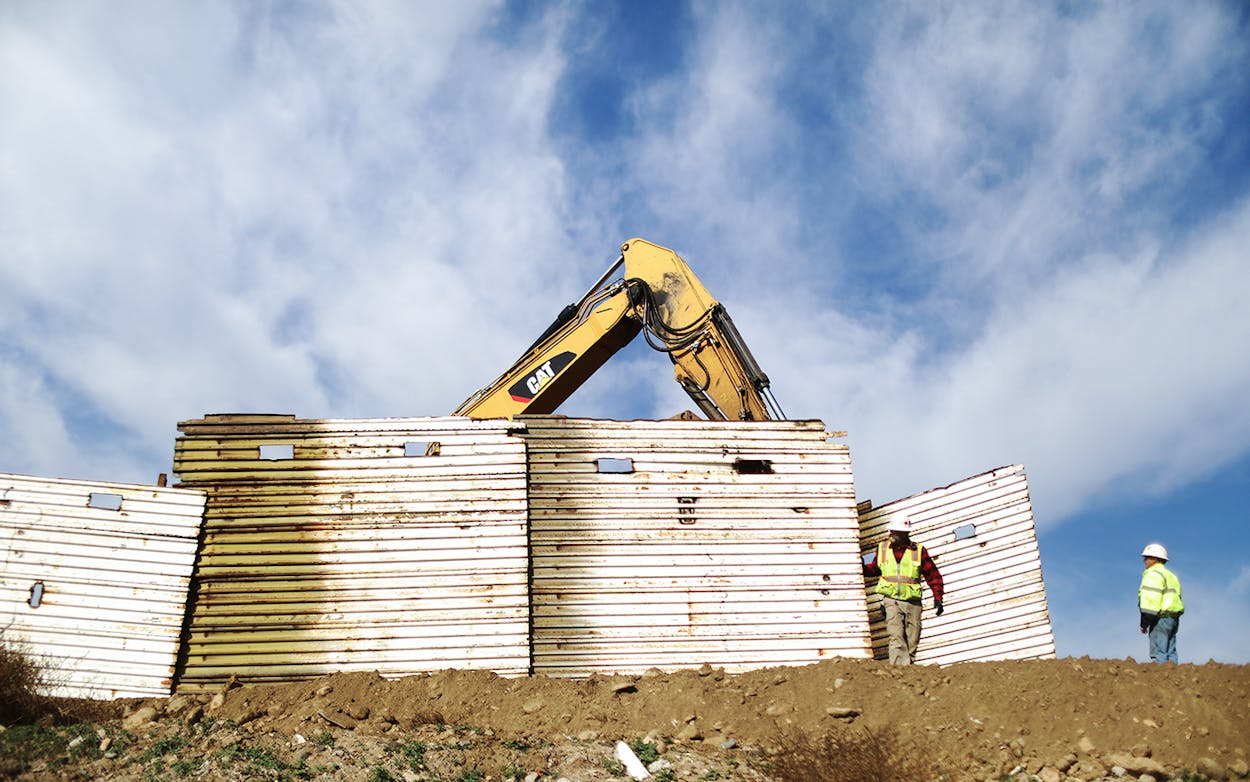The schism between urban and rural voters in Texas gave Republican U.S. Senator Ted Cruz the edge over Democrat Beto O’Rourke in last year’s election, as well as delivered the state to Donald Trump in the 2016 presidential contest. Now, that same divide is playing a role in how Texas voters view President Trump’s desire to build a border wall—and his emergency declaration to circumvent Congress for the money he wants for a wall.
Look at any map of Texas elections over the past decade and it is easy to see that rural voters are mostly responsible for Republican victories in statewide elections. The counties along the Rio Grande go Democrat, as do major urban counties along the Interstate 35 corridor as well as the Houston area. Looking at the 2010 Census, almost 85 percent of Texans lived in urban areas, but it was the rural folks voting for a conservative Republican agenda who turned out at the ballot box each election.
Over the past decade, the Republican voter advantage has been in decline. Gallup surveys gave Texas Republicans an 8-point advantage in 2006, down to 4.5 percentage points in 2012, down to just 3 points going into the 2018 election. And you’ll recall that Cruz defeated O’Rourke by fewer than three points.
So, superficially, it was not much of a surprise to learn that Texas is evenly divided over Trump’s plan to build his promised wall with Mexico, with 48 percent favoring and 48 percent opposing the plan. But a deeper dive into the Quinnipiac University Poll’s regional results disclosed the same trend that has been affecting Texas elections for the past decade. A little more than half the urban and South Texas voters opposed a wall completely, but 63 percent of those in East Texas and 71 percent of those in West Texas backed construction of a wall.
While more than 60 percent of the Texas voters surveyed in the state’s urban areas and along the border with Mexico disapproved of Trump’s emergency order, 52 percent of those in rural East Texas supported the president, as did 63 percent of those in rural West Texas. (The U.S. House this week approved a resolution by U.S. Representative Joaquín Castro, D-San Antonio, to overturn Trump’s executive order.)
Unlike the urban voters, the rural voters believed building a wall is consistent with American values, would decrease crime, and would reduce the flow of illegal drugs into the United States. The only divergence was on the question of whether the federal government should be able to take private property to build the wall. A majority of East Texas voters opposed the use of eminent domain, as did a solid majority of urban voters. But in West Texas, 57 percent said they would support the taking of private property for wall construction.
Similar regional dynamics played out in the Quinnipiac matchup of Trump against potential Democratic opponents next year. Trump held a slight lead but was in a statistical tie with former Vice President Joe Biden, Senator Bernie Sanders, and O’Rourke. The survey found 47 percent for Trump to 46 percent for Biden and O’Rourke and 45 percent for Sanders. Statewide, Trump held a 5 percentage point lead over former San Antonio mayor Julián Castro, 46 percent to 41 percent.
However, like the support for Trump’s wall, the president’s strength comes from the rural areas and small cities of East and West Texas. Trump had 57 percent support or better in East Texas and was past 70 percent among registered voters in West Texas. The Democrats were winning in the major urban areas and South Texas. Even while trailing statewide, Castro was favored by a majority of the voters in South Central and South Texas and was leading in Houston and the Dallas/Fort Worth area.
Last year, O’Rourke seized on border issues as a keystone of his campaign, and it almost carried the day over Cruz. Trump has made certain the wall will also be pivotal to the 2020 presidential election. With the percentage of rural residency in steady decline, the wall also could become the issue that pushes Texas into a major party alignment—much like what happened when rural voters abandoned the Democratic Party after the 1994 elections. Trump carried the 2016 election by a little more than 800,000 votes—and about 730,000 new Texas voters have registered since then. If demographics are destiny in Texas, the dominance of conservative rural voters may be about to give way to the growing city centers.
Pollsters from Quinnipiac University surveyed 1,222 registered Texas voters from February 20 to 25, and the survey has a margin of error of plus or minus 3.4 percentage points. The survey was conducted before O’Rourke announced that he will not challenge John Cornyn’s reelection to the U.S. Senate next year, opening the door for O’Rourke to run for president.






